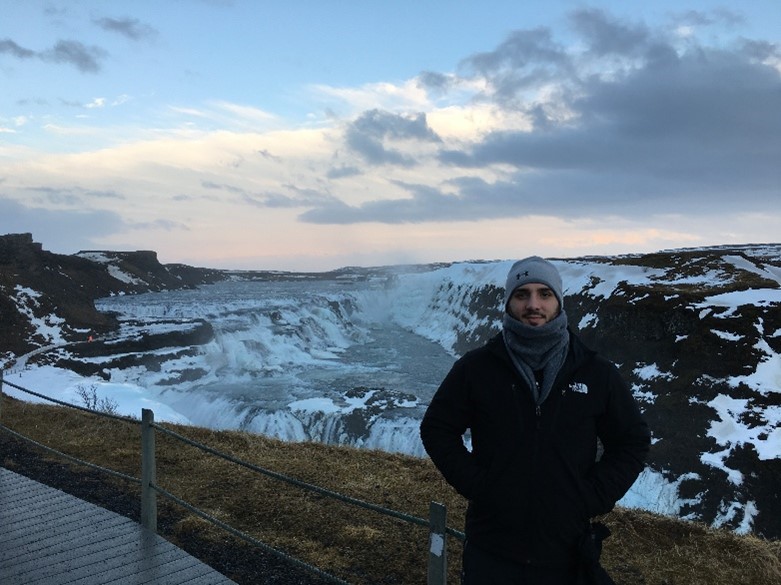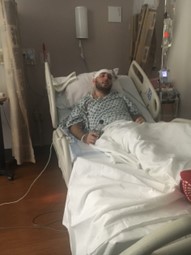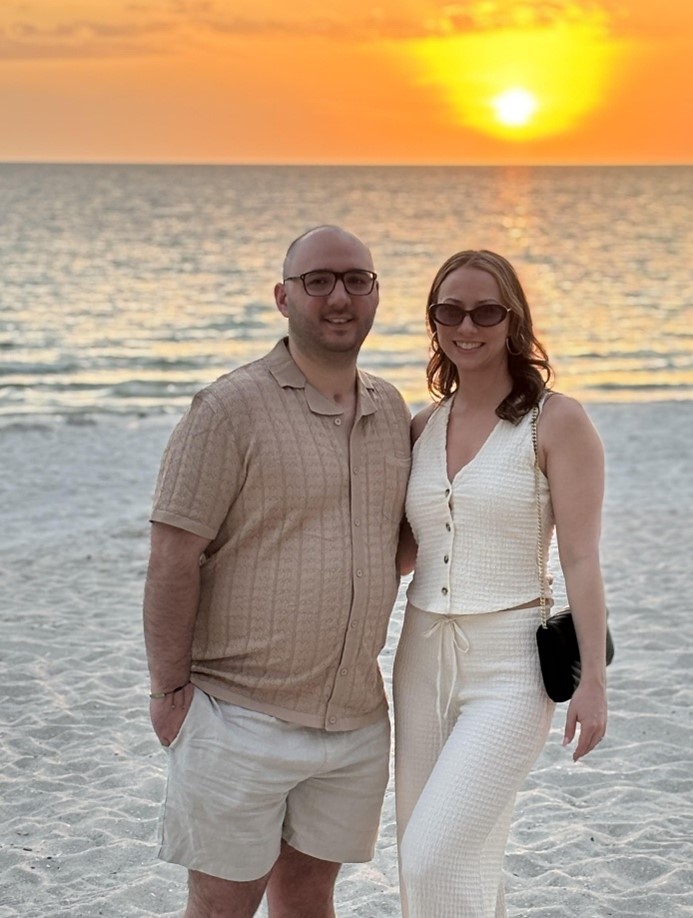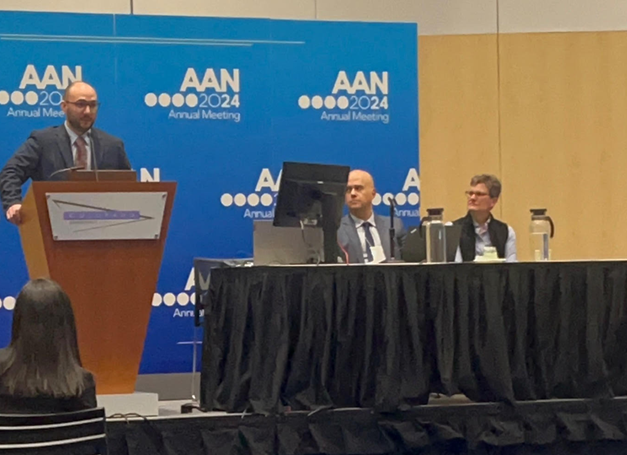Story of Hope: Charlie
Published on: November 06, 2025
In 2019 Charlie was “on top of the world,” enjoying his life as a medical student. He had spent a few years as a physician assistant (PA) in an emergency room and decided to make the transition to medical school. Despite having to dedicate most of his time to studying, he maintained a busy and active lifestyle. Whether it was hanging out with friends, golfing or backpacking in Europe, he was always on the go.
 While some may reflect on medical school as a tough time, Charlie recalls “life couldn’t be any better” at the time. He had no idea of the drastic changes to come. What seems like moments to Charlie, because he really can’t remember much about being sick or what led to the hospitalization, was really months. When asked what had happened before ending up in the hospital, the only memory Charlie has is waking up and seeing his father above him.
While some may reflect on medical school as a tough time, Charlie recalls “life couldn’t be any better” at the time. He had no idea of the drastic changes to come. What seems like moments to Charlie, because he really can’t remember much about being sick or what led to the hospitalization, was really months. When asked what had happened before ending up in the hospital, the only memory Charlie has is waking up and seeing his father above him.
Until that point, Charlie was a young healthy guy and had never had a serious illness. While he does not remember, his mother had noticed he was having intermittent fevers and would have episodes of ‘staring off,’ even when she was speaking to him. Charlie’s brother, who was out of state for his own medical rotations, ‘facetimed’ with Charlie’s parents during one of the events and was concerned. He suggested they bring Charlie to the hospital to be evaluated. After being admitted to the floor, one of his brother’s friends, who was a medicine resident, stopped by to visit on rounds. As he was leaving the room he heard a noise and turned to see Charlie, “bouncing from the bed to the roof.” Charlie was having a convulsive seizure and the decision was made to transfer him to another hospital to continue his care.
Once admitted to a bigger hospital with more specialized neurologic care, Charlie had a breathing tube placed so that he could be put in a medically induced coma to control the seizures. The usual “go to’s” weren’t working and he received almost everything in the arsenal for treating seizures, including seizure medications and immunosuppression — therapies used to shut down the immune system and prevent further inflammation. The seizures were so difficult to control he had to be treated with pentobarbital, a medication that is notorious for its side effects. While the ICU team was working to stop the seizure activity, there was an extensive workup to try and figure out what was causing the seizures. Imaging showed inflammation in the brain and the theory was that Charlie had an autoimmune encephalitis. Because of all the medications needed to stop and prevent more seizures, he remained comatose for months and needed a tracheostomy placed so that he could safely remain on the ventilator. After about four months in the ICU, Charlie was ready to make the first step in his journey to recovery.
Charlie remembers being in the step down unit and eventually being discharged to an inpatient rehabilitation center.
Eager to settle back into normalcy Charlie jumped back into med school. He was initially planning to graduate in 2020 and was thankful for his supportive school who held his place until he was ready to return. After overcoming many challenges, he graduated in 2022. When contemplating a specialty, Charlie jokes that, “I loved studying neuroanatomy and really enjoyed neurology — except for epilepsy, so it's ironic I ended up developing epilepsy.” He matched into an internal medicine program and was hopeful he would progress in developing his career.
Life, however, had other plans. Once intern year started, Charlie had to balance the challenges of being a resident with now having epilepsy, and it was a tough transition. He said at that point the “seizures were more and worse.” This was despite continuing therapies to control his immune system and taking several seizure medications. To make things worse, he also had developed side effects from the seizure medications, including developing kidney stones. He had come so far but realized he needed to step back from practicing medicine and focus on his health.
 Despite the fact that years had passed, Charlie still felt a connection to his initial epileptologist and re-established care. At this point, his seizure patterns had changed and things that didn’t previously bother him were now provoking seizures, like certain noises.
Despite the fact that years had passed, Charlie still felt a connection to his initial epileptologist and re-established care. At this point, his seizure patterns had changed and things that didn’t previously bother him were now provoking seizures, like certain noises.
He was at a relatively good point and not having the bigger convulsive seizures but still had many smaller ones. After discussing potential options, he made the decision to proceed with surgical treatment. Tests were done and pointed to a specific area of the brain as being the seizure generator, and he had brain surgery to carefully remove this part.
It’s been about a year since the surgery and Charlie is back to work as a PA at an academic hospital in New York City. He is fortunate to have colleagues and an administration that are supportive of his medical condition and respect his desire to continue a career in medicine. Although he remains on many seizure medications, he is now feeling good enough to amp up his schedule and take on more shifts each week. Despite all of the challenges, Charlie enjoys the opportunity to not only have the ability to treat the diverse patients throughout the inner city of New York City and beyond, he also enjoys the constant learning and continues to gain medical knowledge with each case.
Life is looking brighter and he is engaged with a wedding coming up in just about a year. Charlie’s life may not look like what he had envisioned five years ago — but he is now thriving professionally and personally. His journey enables him to be able to connect with patients on a deeper level, as he can recognize and identify with challenges of chronic illness, but still offer an optimistic outlook.
|
 Looking for ways to support research on disorders of consciousness and advance patient care? Curing Coma® is the first global public health initiative to tackle the unifying concept of coma as a treatable medical entity, with a goal of developing and implementing coma treatment strategies to improve human lives. Learn more about how you can support this important cause at curingcoma.org. Looking for ways to support research on disorders of consciousness and advance patient care? Curing Coma® is the first global public health initiative to tackle the unifying concept of coma as a treatable medical entity, with a goal of developing and implementing coma treatment strategies to improve human lives. Learn more about how you can support this important cause at curingcoma.org.
LEARN MORE.
|